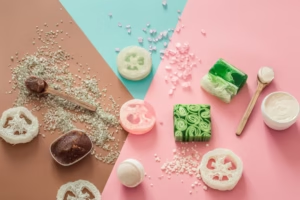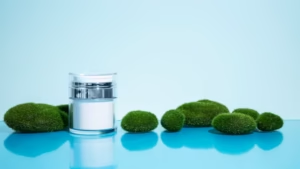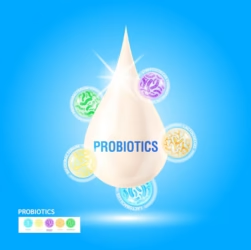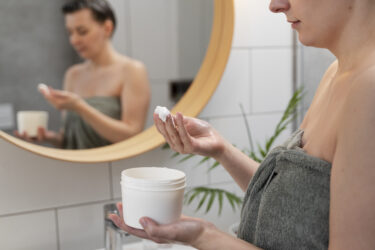How to Formulate Microbiome Skincare:
Did you know your skin is home to 1 trillion microorganisms? This invisible ecosystem, called the skin microbiome, is your first defense against acne, eczema, and premature aging. But harsh cleansers, pollution, and stress can wreck this delicate balance, leading to irritation and breakouts. The solution? Microbiome skincare – products that nourish your skin’s “good bacteria” while calming inflammation.
In this guide, you’ll learn how to formulate (or choose) products with prebiotics, probiotics, and postbiotics – the three pillars of microbiome care. We’ll break down the science, debunk myths, and share actionable tips for radiant, resilient skin. Let’s get started!
What Is the Skin Microbiome?
Your skin microbiome is a diverse ecosystem of bacteria, fungi, and viruses that live symbiotically on the surface of your skin. This microbial layer acts like a biological shield that:
- Helps maintain an optimal pH (typically between 4.5–5.5), ensuring healthy skin function.
- Blocks harmful pathogens like Staphylococcus aureus, a major trigger of acne and infections.
- Supports your skin barrier, improving hydration retention and resilience against irritants.

👉 Fun Fact: A balanced skin microbiome can reduce redness by up to 30% within 4 weeks, according to the Journal of Investigative Dermatology (2023).
The 3 Keys to Microbiome Skincare
- Prebiotics
What They Do: Prebiotics serve as food for beneficial skin microbes, encouraging the growth of friendly strains like Cutibacterium acnes (which actually helps skin when balanced).
Top Sources:
- Oat beta-glucan: Soothes inflammation while feeding good bacteria.
- Xylitol: Derived from birch wood; suppresses harmful bacteria.
- Galactoarabinan: Extracted from larch trees; hydrates and supports the barrier.
💡 Formulation Tip: Use 2–5% in toners, serums, or essence products for optimal performance without irritation.
- Probiotics
What They Do: Probiotics are live beneficial bacteria that help displace harmful microbes, reducing inflammation and improving barrier integrity.
Effective Strains Include:
- Lactobacillus: Reduces acne-causing bacteria and supports hydration.
- Bifidobacterium: Calms eczema flare-ups and improves barrier repair.
⚠️ Formulation Note: Live probiotics are fragile. They can die in water-based formulas with preservatives. Use lysates (broken cell walls) or fermentation filtrates instead. Always use opaque, airtight packaging to maintain potency.
- Postbiotics
What They Do: These are bioactive compounds created by probiotics, offering powerful benefits without live bacteria.
Examples Include:
- Lactic acid: Gently exfoliates and promotes cell turnover without stripping the skin.
- Short-chain fatty acids (SCFAs): Such as butyrate, which reduce inflammation and promote barrier healing.
💡 Pro Tip: Combine postbiotics with ceramides to reinforce the lipid barrier, especially in eczema-prone or sensitive skin.
How to Formulate Microbiome-Friendly Products
Step 1: Avoid Harsh Ingredients
Skip These:
- Sulfates (SLS/SLES): Strip natural oils and microbiota.
- Alcohol denat.: Dries out the skin and alters microbial balance.
- Synthetic Fragrance: A top cause of allergic reactions and dysbiosis.
Curious how emulsifiers affect product texture, stability, and microbiome compatibility? Learn more in this guide on Emulsifiers in Cosmetics.
🔍 Why: These ingredients increase skin’s pH, weaken the barrier, and disrupt the natural microbial balance (a state called dysbiosis).
Step 2: Balance pH Levels
- Ideal pH: Aim for a range of 4.5–5.5, which supports the growth of beneficial microbes.
- How to Adjust: Use mild acidifiers like citric acid or lactic acid to maintain this range.
⚠️ Warning: High pH levels (above 6) can deactivate Lactobacillus strains and increase pathogenic growth on the skin.
Step 3: Layer Pre-, Pro-, and Postbiotics
Example Routine:
- Cleanser: Oat extract + xylitol to cleanse and nourish.
- Serum: 5% Lactobacillus ferment to soothe and balance.
- Moisturizer: Ceramides + lactic acid to hydrate and calm.
📊 Clinical Study: According to NIH (2022), 89% of users saw fewer breakouts and redness after using this layered approach for 6 weeks.
Step 4: Preserve Probiotic Stability
- Packaging: Use airless pumps or dark glass bottles to reduce oxidation and UV exposure.
- Preservative Caution: Avoid parabens and strong preservatives like phenoxyethanol, which can destroy live or lysed cultures.

Top 5 Microbiome-Friendly Ingredients
| Ingredient | Source | Skin Benefit |
| Oat Beta-Glucan | Oats | Soothes irritated skin and feeds healthy microbes. |
| Lactobacillus Ferment | Yogurt/Kimchi | Clears acne, brightens dull skin. |
| Galactoarabinan | Larch Tree | Deep hydration and skin barrier reinforcement. |
| Xylitol | Birch Wood | Inhibits harmful bacteria while hydrating skin. |
| Squalane | Sugarcane | Locks in moisture and mimics skin’s natural oils. |
3 Common Microbiome Skincare Mistakes
Even with good intentions, certain skincare habits can unintentionally harm your skin microbiome. Understanding these common mistakes helps maintain a balanced, healthy skin ecosystem.
Mistake 1: Over-Exfoliating
Exfoliation removes dead skin cells, but overdoing it—especially with harsh scrubs or strong acids—can strip away the skin’s natural oils and disrupt microbial balance.
🔬 Result: Excess exfoliation damages the protective lipid layer, leaving the microbiome vulnerable and increasing sensitivity, redness, and breakouts.
✅ Fix: Opt for gentle exfoliants like polyhydroxy acids (PHAs), which are milder on skin and microbiome, and limit usage to 1–2 times weekly to allow your skin time to repair.
Mistake 2: Mixing Probiotics with Acids
Live probiotics are sensitive to environmental stressors like acidity. Strong acids, especially in active serums, can deactivate or destroy live bacterial strains.
⚠️ Example: Applying a potent vitamin C serum (ascorbic acid) right before a live probiotic cream can neutralize the beneficial bacteria, making the probiotic step ineffective.
✅ Fix: Replace live probiotics with postbiotics like fermented filtrates or lactic acid, which remain stable, offer skin-calming benefits, and don’t require special preservation.
Not sure how retinol fits into a microbiome-safe routine? Discover everything you need to know in our breakdown of Retinol in Skincare: Benefits & Uses.
Mistake 3: Ignoring pH Balance
Your skin’s microbiome thrives in a slightly acidic environment (pH 4.5–5.5). Using products outside this range—especially alkaline ones—can lead to microbial imbalance and irritation.
🔎 Example: Alkaline cleansers or soaps with pH around 9 can eliminate good bacteria like Lactobacillus and Cutibacterium acnes, disrupting the skin’s defense.
✅ Fix: Always measure your product’s pH using pH test strips. Use safe acidifiers like citric acid or lactic acid to maintain the ideal range and support microbiome harmony.
5 Best Microbiome Skincare Products
- Biossance Squalane + Probiotic Gel Moisturizer
- Contains Lactococcus ferment lysate to reduce redness and support hydration.
- Aveeno Calm + Restore Oat Gel Moisturizer
- Combines prebiotic oat with postbiotic feverfew to soothe irritation.
- La Roche-Posay Toleriane Double Repair Moisturizer
- Includes ceramides and niacinamide to restore the skin barrier and improve microbiome balance.
- Mother Dirt AO+ Mist
- Formulated with live Nitrosomonas eutropha (ammonia-oxidizing bacteria) to reduce acne naturally.
- Krave Beauty Great Barrier Relief
- A microbiome-supporting serum with tamanu oil, ceramides, and plant-based actives for sensitive, inflamed skin.

Explore more microbiome-friendly skincare products curated by experts here on Sephora.
FAQs:
Q1: Can probiotic skincare cause breakouts?
A: It’s rare. If you react, try switching to postbiotics instead—they offer benefits without live bacteria and are safer for compromised skin.
Q2: How long until I see results?
A: Most users report improvements in 4 to 6 weeks, as the microbiome needs time to stabilize and reestablish balance.
Q3: Are prebiotics safe for fungal acne?
A: Avoid galactoarabinan as it may feed Malassezia (yeast). Instead, use xylitol or beta-glucan, which are safe and effective.
Q4: Can I DIY microbiome skincare?
A: No. Homemade probiotics risk contamination and spoilage. Stick with lab-tested, dermatologist-approved formulations.
Q5: Do I need to refrigerate probiotic skincare?
A: Only if it says “live cultures” on the label. Most commercial products use stable lysates or ferments that don’t require refrigeration.
Key Takeaways
- Prebiotics act as nourishment for beneficial microbes and support overall skin health.
- Probiotics introduce good bacteria—use lysed or fermented versions for better shelf stability.
- Postbiotics are effective byproducts that reduce inflammation and are safe even for sensitive or acne-prone skin.
- Maintaining pH between 4.5–5.5 is crucial for preserving the skin’s microbial ecosystem.
- Avoid harsh ingredients like sulfates, alcohol denat., and synthetic fragrance to prevent microbiome disruption.
Want to explore how lab-grown ingredients are revolutionizing beauty? Check out this deep dive on Biotech Skincare for ingredient innovations, product examples, and real results.
Conclusion:
Microbiome skincare isn’t just a trend—it’s a science-backed approach to achieving resilient, healthier skin. By nurturing the balance of beneficial microbes, you’re reinforcing your skin’s first line of defense. Thoughtful formulation with pre-, pro-, and postbiotics, along with pH control and gentle ingredients, helps maintain this harmony.
As research evolves, microbiome-friendly products are becoming essential tools for managing everything from acne to eczema. Embracing this strategy can lead to visible improvements in skin clarity, hydration, and long-term barrier function.



